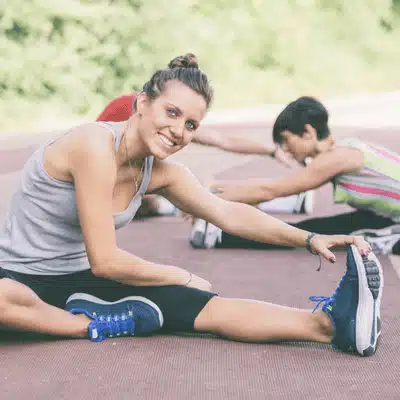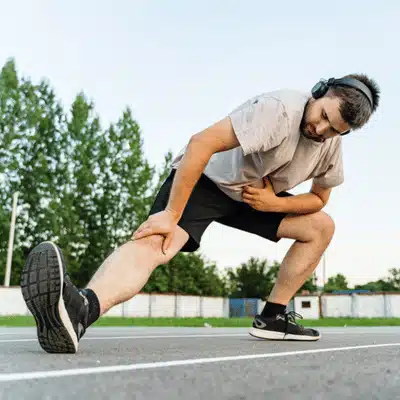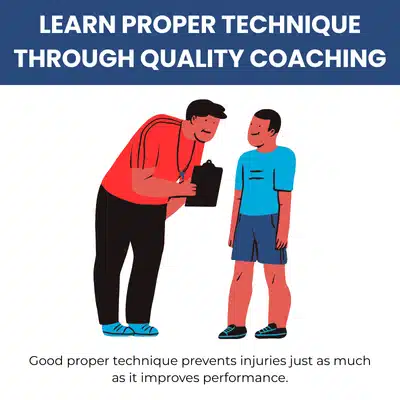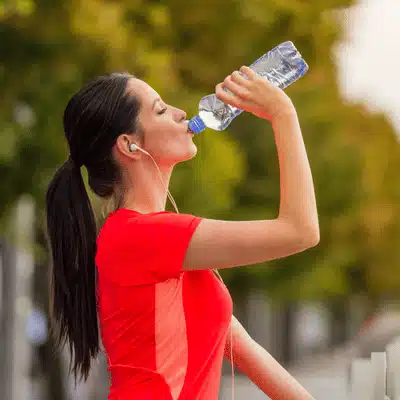
Sports injuries don't have to sideline your athletic dreams. With the right approach, you can stay healthy while pushing your limits. Sports medicine research shows that smart prevention strategies can cut injury rates dramatically.

Strong bodies resist injury better than weak ones. Preseason conditioning creates this foundation before competition begins. Athletes who complete more preseason conditioning face fewer injuries during their season.
Your preseason conditioning program should start 6-8 weeks before competition. Begin slowly and build intensity week by week. This gradual approach lets your body adapt safely through proper training practices.
Strength training forms the core of injury prevention. Strong muscles protect joints and absorb impact forces. Research in sports medicine proves that muscle strength programs cut overall injuries by two-thirds. Overuse injuries drop by half.
Focus on exercises that build power throughout your body. Include squats, deadlifts, and lunges for lower body strength. Add push-ups, pull-ups, and rows for upper body power. Don't forget core strength work like planks and bridges. A strong core improves balance and body control.
Balance exercises deserve special attention in your preseason conditioning routine. These exercises train proprioception - your body's ability to sense its position. Better proprioception prevents ankle sprains and knee injuries. Studies show balance exercises alone reduce ankle injuries by 40%.
Add plyometrics to your preseason conditioning twice per week. These explosive jumping exercises build power and teach proper landing mechanics. Soccer players who added plyometrics to their preseason conditioning cut injury rates by over 50%.
Make your preseason conditioning sport-specific when possible. Runners should gradually increase mileage in their preseason conditioning programs. Basketball players need lateral movement drills in their preseason conditioning. Follow the 10% rule - never increase training load by more than 10% per week.
Balance exercises should include single-leg stands, wobble board training, and dynamic stability work. These prevention strategies target proprioception and reduce injury risk. Include balance exercises in every preseason conditioning session for best results.

Cold muscles tear easily. A proper warm up prepares your body for intense activity. Spend 5-10 minutes on light movement before practice or games. Jog, do jumping jacks, or cycle at an easy pace.
Follow your warm up with dynamic movements. Leg swings, arm circles, and walking lunges work well. These movements increase blood flow and improve flexibility. Flexible muscles resist injury better than tight ones.
Save static stretching for after your warm up. Hold each stretch for 20-30 seconds without bouncing. Focus on the muscle groups your sport uses most. Volleyball players should focus on shoulder flexibility. Runners need flexible calves, quads, and hip flexors.
Regular stretching improves joint range of motion over time. This makes injury prevention easier as the season progresses. Many exercise-related injuries happen when muscles lack adequate flexibility through poor stretching habits.
Your protective equipment serves as your last line of defense. Helmets prevent head injuries in football, hockey, and cycling. Shin guards protect soccer players from kicks. Mouthguards shield teeth in contact sports.
Modern protective equipment uses advanced materials to absorb impact. These designs reduce injury risk when worn correctly. The key word is "correctly" - poorly fitting gear won't protect you fully.
Check your safety gear regularly for damage or wear. Replace broken items immediately. Many helmet standards require yearly reconditioning to maintain protection levels. Never compromise on protective equipment quality or fit.
Don't overlook simple gear like proper footwear. Basketball shoes with ankle support help prevent sprains. Cleats give field sport athletes the traction they need. The right shoes for your sport and surface make a real difference.
Youth sports leagues should enforce equipment rules strictly. Coaches must do regular gear checks. Young athletes need extra education about why gear matters for their safety.

Good proper technique prevents injuries just as much as it improves performance. Football players who tackle with correct form avoid dangerous head and neck injuries. Soccer players learn safe heading technique once they reach the right age.
Coaching plays a huge role in injury prevention. Coaches must prioritize safety education alongside skill development. They should correct poor form immediately, both in games and practice.
Recent rule changes in youth sports show how policy can improve safety. When U.S. Soccer banned heading for players under 10, concussion rates dropped 26%. These prevention strategies work at the system level.
Education remains the foundation of all injury prevention efforts. Coaches need training in safety practices and injury recognition. Research shows that formal coach education leads to better adoption of safety measures. Sports education programs help coaches understand injury patterns and risk factors better.
Athletes must learn to communicate about pain and discomfort through proper education. A culture of openness prevents minor issues from becoming major injuries. Young players especially need education about listening to their bodies.
Take advantage of available safety resources through continuing education. The CDC offers concussion education programs. Sports medicine clinics provide injury prevention workshops. The more education you have, the safer you'll be.
Education should cover proper movement patterns, equipment use, and warning signs of injury. Ongoing education helps athletes and coaches stay current with best practices. Make education a priority in your sport participation.
Rest prevents injuries just as much as training does. About 50% of youth sports injuries come from overuse rather than acute trauma. These develop when athletes repeat the same motions without enough recovery time.
Take at least 1-2 complete rest days each week. Youth athletes should take 2-3 months off per year from their main sport. These breaks prevent injuries and mental burnout through proper rest periods.
Cross-training helps prevent repetitive stress injuries. Mix running, swimming, cycling, and other activities through agility training variations. Playing multiple sports through childhood actually reduces injury risk compared to early specialization.
Watch for signs of overtraining syndrome. This happens when athletes train too hard without enough recovery. Symptoms include chronic fatigue, declining performance, and increased injury risk.
Sleep plays a crucial role in muscle repair and growth. Growing athletes need extra sleep for tissue healing. Poor sleep increases injury risk and slows the recovery process.
Don't ignore pain signals from your body. Address aches and pains early before they become major problems requiring rehabilitation.

Good nutrition supports injury prevention and tissue repair. Protein helps rebuild damaged muscle tissue. Carbohydrates refuel energy stores after training. Calcium and vitamin D keep bones strong.
Hydration affects performance and safety directly. Dehydrated athletes face higher risks of muscle cramps, heat illness, and slower reaction times. Drink water before, during, and after exercise. Aim for one cup every 15-20 minutes in hot conditions.
If you do get injured, complete your rehabilitation fully before returning to play. Many athletes rush back too soon and get hurt again. Proper rehabilitation restores strength, flexibility, and proprioception through structured programs.
Work with a physical therapist or athletic trainer when possible. They can guide you through a program that addresses all aspects of healing. Think of rehabilitation as another form of injury prevention.
Sports injury prevention requires commitment from athletes, coaches, and parents. Start with comprehensive preseason conditioning that includes strength work, balance exercises, and sport-specific preparation. Your preseason conditioning program should address all movement patterns your sport requires.
Always warm up properly and maintain joint mobility through regular flexibility work. Use appropriate gear and learn safe techniques from qualified instructors. Prioritize adequate rest to prevent overuse problems.
Support your body with good nutrition and proper hydration. Complete any rehabilitation programs fully before returning to competition.
Most importantly, never stop learning about injury prevention through ongoing education. Knowledge continues advancing in this field. Stay informed through credible sources and safety programs.
At Sunnyvale Orthopedics, our specialists help athletes stay healthy and perform their best. We offer evaluations, prevention guidance, and expert treatment when needed.
Ready to prevent injuries and improve your performance? Contact Sunnyvale Orthopedics today to schedule your sports medicine consultation and take the first step toward safer athletics.